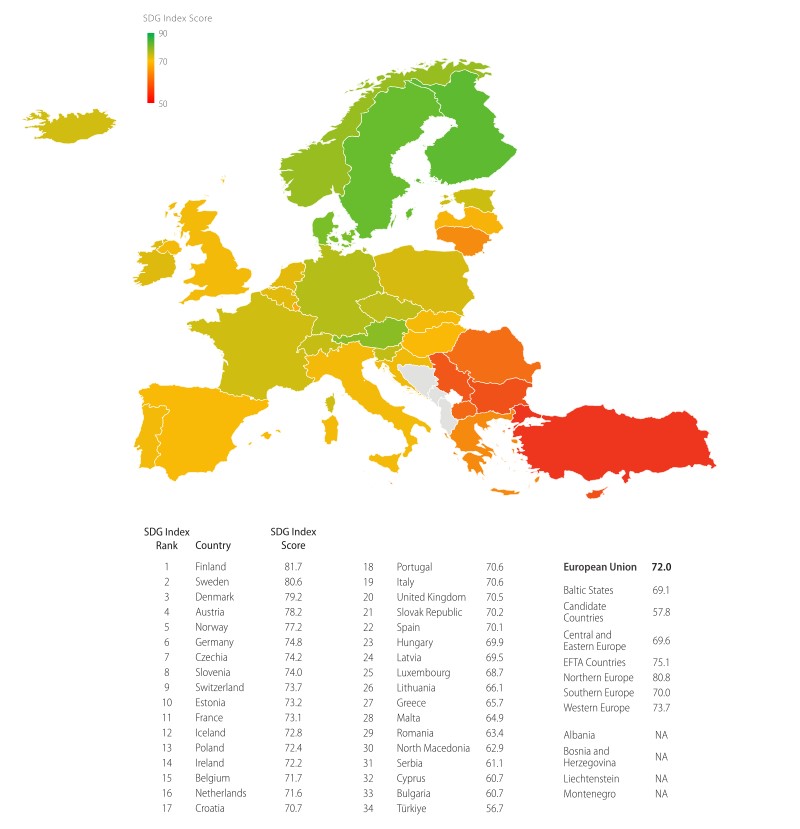Se hela rapporten på sidan https://eu-dashboards.sdgindex.org/
The second challenge relates to inequalities within countries. From an international perspective, social protection systems and other socio-economic policies make Europe one of the most equal continents in the world. However, there are persisting gaps in access to and quality of services and opportunities across population groups in some EU member states and candidate countries. Vulnerable groups are particularly impacted by multiple health, security and economic crises. This is covered more in the next section (1.3), which presents the 2022 ‘leave no one behind’ Index.
The third challenge relates to persisting differences in SDG performance across European countries and regions. This is generally referred to as ‘convergence’ in Europe and by EU leaders. Northern Europe, EFTA countries and Western Europe all perform above the EU27 average on the SDG Index score. On the other hand, Baltic States, Southern Europe, and Central and Eastern European countries perform slightly below the average EU27 score, although these subregions have progressed more rapidly over the past decade, and candidate countries perform well below the EU27 average, driven mostly by poorer performance on socio-economic goals and on SDG 16 (Peace, justice and strong institutions). The pace of convergence is slow, and is likely driven by better performance in capital regions or urban agglomerations, with other regions and rural areas lagging behind.

